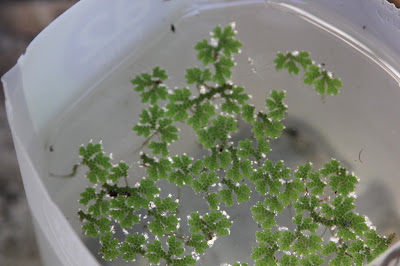Guinea pigs are an amazing little animal. We have had them on and off for many years. Our first guinea pig died at about 8 years of age. He used to belong to someone else but they couldn't look after him so we got him. He was a great little pet and I was sad when he passed.
We currently have three large and fat females who used to be someone else pets but now live with us. Hopefully they have long and happy lives with us.
Our guinea pigs are great at turning grass and weeds into rich fertiliser. They are also fantastic at mowing grass in places that are difficult to get the mower or when I simply can't be bothered to mow. They are also interesting to watch and nice to have around.
I move the guinea pig cage several times per day (morning and afternoon during the week, more often if I am home during the day and not too busy) and they eat out the lawn for me. I also give them weeds that they like from the vegetable garden, and sometimes give them vegetable scraps and apple cores and things simply because they like to eat them.
When the guinea pigs see me they oink loudly. When guinea pigs want people to feed them they make this oinking noise (commonly referred to by cavy fanciers as 'wheeking'). Sometimes they have plenty of feed but they will see me and excitedly start to oink in the hope that I will give them something nicer to eat. More often than not I do exactly what they want me to do. It is hard to say no.
 |
| Two of our guinea pigs |
Yesterday I learned something new about guinea pigs. I love learning new things! Yesterday someone told me that guinea pigs only use this oinking sound to communicate
with people. Apparently guinea pigs didn't used to make this sound until they were domesticated. They said that no other animal have a specific sound purely to communicate with people like this.
I had never thought of that before, but it is true. Our guinea pigs only make this oinking noise to call to people that they know who are likely to feed them something they like. They don't ever make this noise to each other, they don't make this sound when they see my kids, they never make this sound when strangers such as the postman walk past them, or any other time when we are not in sight. If they did I would hear them.
Sure your dog or cat may make a noise that is just for you, but
all cats and dogs don't do it for their owners. Guinea pigs are well known for all oinking for people anywhere in the world that they are kept. This does not appear to be a learned behaviour, they
all seem to do it.
It seems to be a behaviour that is written in their genes. Considering that guinea pigs were domesticated about 7,000 years ago, and were raised exclusively in people's kitchens from that time until the 1500's, this makes sense. When you consider that most of these animals would have been eaten and not lived very long that is a LOT of generations of guinea pigs that were raised in people's houses where people provided all of their food. Having some way to tell people they want more food sounds like it would have been beneficial and would have been unknowingly selected for.
Guinea pigs are fascinating creatures, I love how they do things like this. I wish I had more of them.




